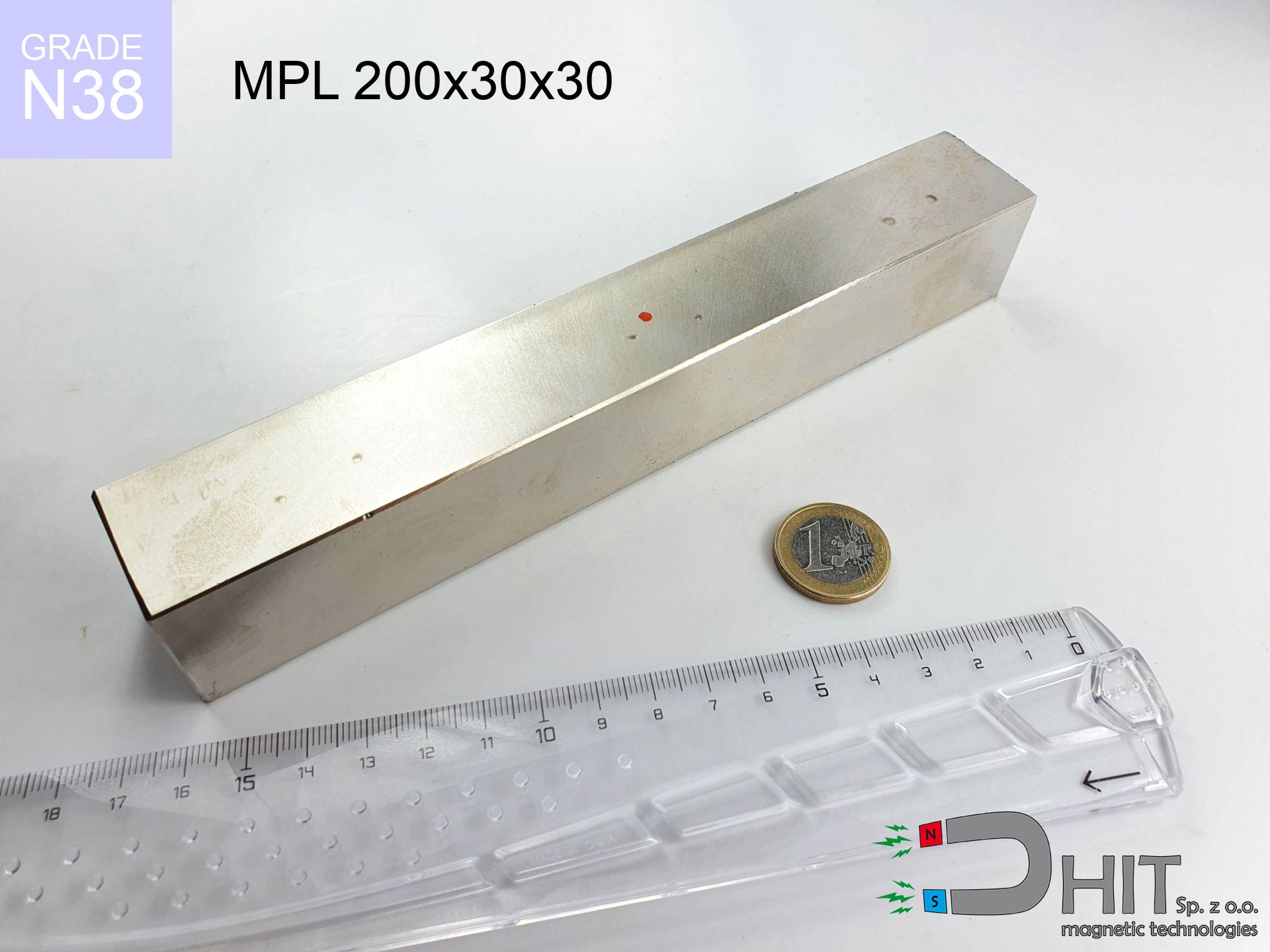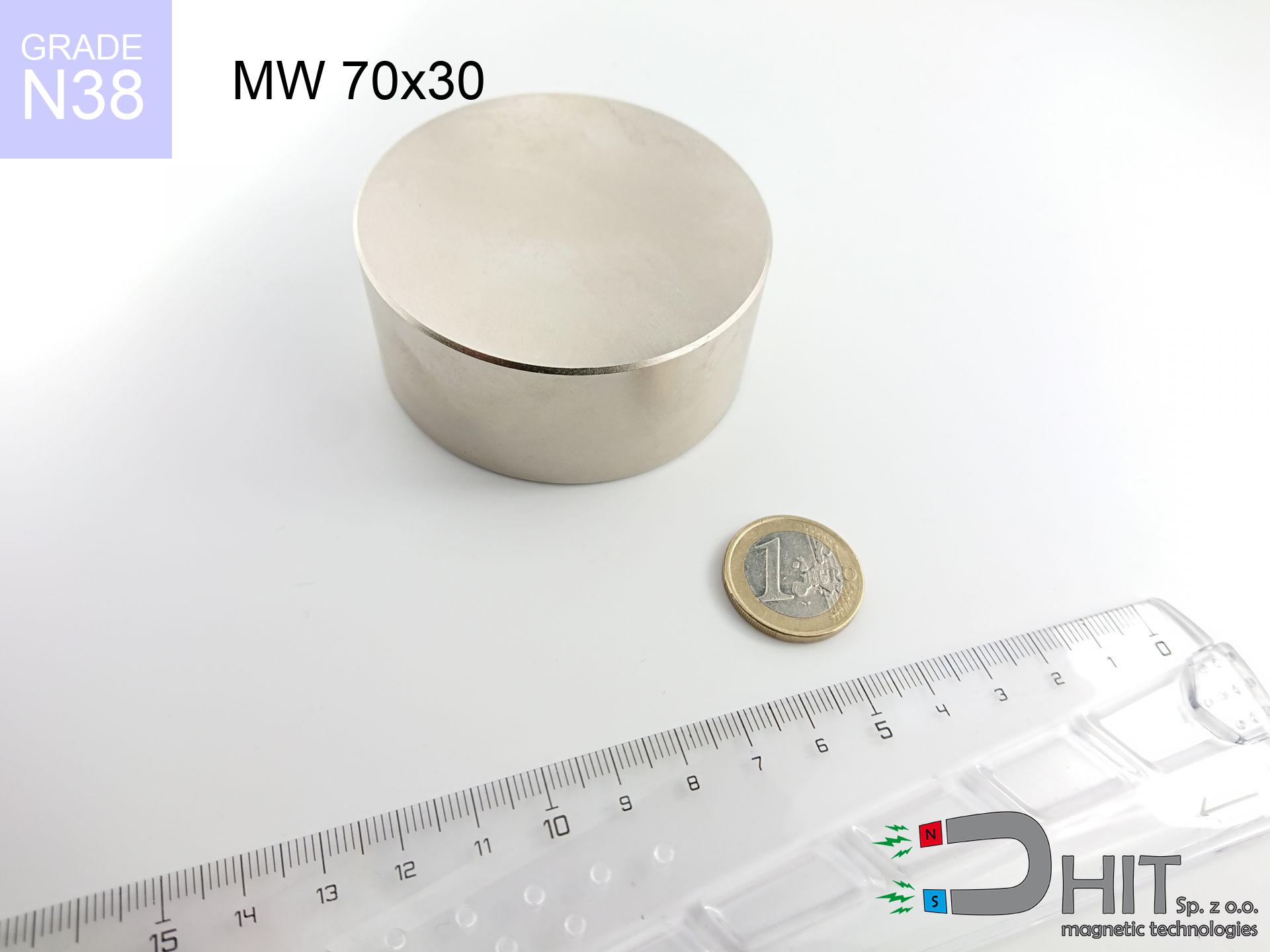SM 18x150 [2xM5] / N42 - magnetic separator
magnetic separator
Catalog no 130271
GTIN/EAN: 5906301812739
Diameter Ø
18 mm [±1 mm]
Height
150 mm [±1 mm]
Weight
0.01 g
Magnetic Flux
~ 5 400 Gauss [±5%]
332.10 ZŁ with VAT / pcs + price for transport
270.00 ZŁ net + 23% VAT / pcs
bulk discounts:
Need more?
Pick up the phone and ask
+48 22 499 98 98
if you prefer contact us by means of
our online form
through our site.
Lifting power along with form of magnetic components can be analyzed with our
force calculator.
Same-day processing for orders placed before 14:00.
Physical properties - SM 18x150 [2xM5] / N42 - magnetic separator
Specification / characteristics - SM 18x150 [2xM5] / N42 - magnetic separator
| properties | values |
|---|---|
| Cat. no. | 130271 |
| GTIN/EAN | 5906301812739 |
| Production/Distribution | Dhit sp. z o.o. |
| Country of origin | Poland / China / Germany |
| Customs code | 85059029 |
| Diameter Ø | 18 mm [±1 mm] |
| Height | 150 mm [±1 mm] |
| Weight | 0.01 g |
| Material Type | Stainless steel AISI 304 / A2 |
| Magnetic Flux | ~ 5 400 Gauss [±5%] |
| Size/Mount Quantity | 2xM5 |
| Polarity | circumferential - 7 poles |
| Casing Tube Thickness | 1 mm |
| Manufacturing Tolerance | ±1 mm |
Magnetic properties of material N42
| properties | values | units |
|---|---|---|
| remenance Br [min. - max.] ? | 12.9-13.2 | kGs |
| remenance Br [min. - max.] ? | 1290-1320 | mT |
| coercivity bHc ? | 10.8-12.0 | kOe |
| coercivity bHc ? | 860-955 | kA/m |
| actual internal force iHc | ≥ 12 | kOe |
| actual internal force iHc | ≥ 955 | kA/m |
| energy density [min. - max.] ? | 40-42 | BH max MGOe |
| energy density [min. - max.] ? | 318-334 | BH max KJ/m |
| max. temperature ? | ≤ 80 | °C |
Physical properties of sintered neodymium magnets Nd2Fe14B at 20°C
| properties | values | units |
|---|---|---|
| Vickers hardness | ≥550 | Hv |
| Density | ≥7.4 | g/cm3 |
| Curie Temperature TC | 312 - 380 | °C |
| Curie Temperature TF | 593 - 716 | °F |
| Specific resistance | 150 | μΩ⋅cm |
| Bending strength | 250 | MPa |
| Compressive strength | 1000~1100 | MPa |
| Thermal expansion parallel (∥) to orientation (M) | (3-4) x 10-6 | °C-1 |
| Thermal expansion perpendicular (⊥) to orientation (M) | -(1-3) x 10-6 | °C-1 |
| Young's modulus | 1.7 x 104 | kg/mm² |
Chemical composition
| iron (Fe) | 64% – 68% |
| neodymium (Nd) | 29% – 32% |
| boron (B) | 1.1% – 1.2% |
| dysprosium (Dy) | 0.5% – 2.0% |
| coating (Ni-Cu-Ni) | < 0.05% |
Environmental data
| recyclability (EoL) | 100% |
| recycled raw materials | ~10% (pre-cons) |
| carbon footprint | low / zredukowany |
| waste code (EWC) | 16 02 16 |
Other products
Advantages as well as disadvantages of Nd2Fe14B magnets.
Strengths
- They have constant strength, and over around 10 years their performance decreases symbolically – ~1% (in testing),
- Neodymium magnets remain extremely resistant to demagnetization caused by external magnetic fields,
- In other words, due to the metallic layer of silver, the element gains a professional look,
- Magnets possess impressive magnetic induction on the active area,
- Through (appropriate) combination of ingredients, they can achieve high thermal strength, allowing for operation at temperatures reaching 230°C and above...
- Considering the potential of free shaping and customization to individualized needs, NdFeB magnets can be modeled in a wide range of forms and dimensions, which expands the range of possible applications,
- Key role in high-tech industry – they find application in magnetic memories, drive modules, precision medical tools, and technologically advanced constructions.
- Thanks to their power density, small magnets offer high operating force, in miniature format,
Limitations
- At very strong impacts they can crack, therefore we advise placing them in steel cases. A metal housing provides additional protection against damage, as well as increases the magnet's durability.
- When exposed to high temperature, neodymium magnets experience a drop in force. Often, when the temperature exceeds 80°C, their power decreases (depending on the size and shape of the magnet). For those who need magnets for extreme conditions, we offer [AH] versions withstanding up to 230°C
- Due to the susceptibility of magnets to corrosion in a humid environment, we recommend using waterproof magnets made of rubber, plastic or other material resistant to moisture, when using outdoors
- Due to limitations in realizing nuts and complex shapes in magnets, we propose using cover - magnetic mount.
- Health risk resulting from small fragments of magnets are risky, in case of ingestion, which gains importance in the aspect of protecting the youngest. Additionally, tiny parts of these magnets are able to complicate diagnosis medical in case of swallowing.
- Higher cost of purchase is one of the disadvantages compared to ceramic magnets, especially in budget applications
Pull force analysis
Breakaway strength of the magnet in ideal conditions – what contributes to it?
- with the use of a yoke made of low-carbon steel, guaranteeing maximum field concentration
- whose thickness reaches at least 10 mm
- with an polished touching surface
- under conditions of no distance (surface-to-surface)
- for force acting at a right angle (in the magnet axis)
- at temperature approx. 20 degrees Celsius
Impact of factors on magnetic holding capacity in practice
- Distance – existence of any layer (rust, dirt, air) interrupts the magnetic circuit, which reduces capacity steeply (even by 50% at 0.5 mm).
- Direction of force – maximum parameter is available only during perpendicular pulling. The force required to slide of the magnet along the plate is typically several times lower (approx. 1/5 of the lifting capacity).
- Substrate thickness – to utilize 100% power, the steel must be sufficiently thick. Paper-thin metal limits the lifting capacity (the magnet "punches through" it).
- Material type – the best choice is high-permeability steel. Hardened steels may attract less.
- Smoothness – full contact is possible only on polished steel. Any scratches and bumps create air cushions, reducing force.
- Thermal factor – hot environment reduces magnetic field. Too high temperature can permanently damage the magnet.
Holding force was tested on a smooth steel plate of 20 mm thickness, when the force acted perpendicularly, in contrast under shearing force the holding force is lower. Additionally, even a minimal clearance between the magnet and the plate reduces the lifting capacity.
Safety rules for work with NdFeB magnets
Threat to navigation
Navigation devices and mobile phones are extremely sensitive to magnetic fields. Close proximity with a powerful NdFeB magnet can permanently damage the internal compass in your phone.
Flammability
Dust generated during cutting of magnets is flammable. Do not drill into magnets unless you are an expert.
Maximum temperature
Watch the temperature. Exposing the magnet to high heat will ruin its properties and strength.
Warning for allergy sufferers
Nickel alert: The Ni-Cu-Ni coating contains nickel. If redness appears, cease working with magnets and use protective gear.
Safe distance
Avoid bringing magnets close to a purse, laptop, or screen. The magnetism can irreversibly ruin these devices and erase data from cards.
Magnet fragility
Protect your eyes. Magnets can fracture upon violent connection, launching shards into the air. We recommend safety glasses.
Caution required
Use magnets consciously. Their powerful strength can surprise even professionals. Plan your moves and respect their force.
Pinching danger
Large magnets can break fingers instantly. Never place your hand between two strong magnets.
ICD Warning
For implant holders: Strong magnetic fields affect electronics. Keep at least 30 cm distance or ask another person to work with the magnets.
Product not for children
Always keep magnets out of reach of children. Ingestion danger is significant, and the effects of magnets connecting inside the body are tragic.

![Separation magnetic rod SM 18x150 [2xM5] / N42 Separation magnetic rod SM 18x150 [2xM5] / N42](https://cdn3.dhit.pl/graphics/banners/magnet.webp)
![SM 18x150 [2xM5] / N42 - magnetic separator](https://cdn3.dhit.pl/graphics/products/sm-18x150-2xm5-pec.jpg)





